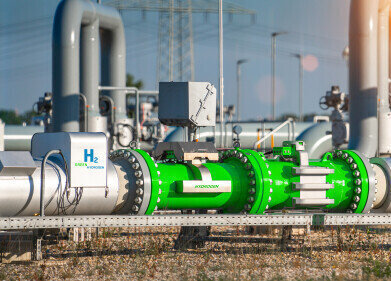Biofuel industry news
What Energy Sources Are We Moving Towards?
Jul 24 2022
Fossil fuels aren’t just driving global warming and intensifying climate change. They’re also a major public health risk, with a recent article published in the New England Journal of Medicine exploring the link between climate change, fossil fuel air pollution and children’s health.
“The combustion of fossil fuels has created a parallel crisis of air pollution, because the burning of these fuels releases massive amounts of airborne fine respirable particles with an aerodynamic diameter of 2.5 μm or less (PM2.5), sulphur dioxide, nitrogen oxides, polycyclic aromatic hydrocarbon (PAH), mercury, and volatile chemicals that form ground-level ozone,” write the authors. “One billion children worldwide are exposed to very high levels of air pollution.”
Air pollution a public health crisis
The authors warn that ongoing exposure to polluted air can disrupt development during infancy and childhood. Airborne pollutants can also hinder the vital biologic defence mechanisms that help the body repair DNA damage, protect the immune system and filter out chemicals. This can increase the risk of psychosocial stress and heighten vulnerability to physical toxicants.
Carbon dioxide is a major culprit, with emissions rising sharply over the past 70 years. In 2020 a huge 35 billion metric tons of CO2 was released into the atmosphere. This is an enormous jump compared to the 5 billion metric tons recorded in 1950. As a result, average surface temperatures on Earth have spiked by 1.1°C since the pre-industrial era. Without immediate action on a global scale, the Intergovernmental Panel on Climate Change warns the consequences will be catastrophic.
Tackling greenhouse gas emissions with renewable energy
Replacing fossil fuels with climate-friendly energy sources will play a critical role in reducing greenhouse gas emissions, addressing the air pollution crisis and safeguarding the health of the planet. So, what energy sources are we moving towards? Find out more below:
Solar energy
The sun has been generating solar radiation for billions of years and has incredible potential as a renewable energy source. New technologies are making it easier to capture this energy and convert it into useable heat, power and electricity. Together with Dutch startup SolarDuck, German-based energy giant RWE is spearheading an exciting new project that will see a “floating solar park” installed in the North Sea. The panels will form a floating carpet over water off the coast of Belgium and will generate up to 500kW of energy.
Biofuels
From cars and buses to commercial jets, biofuels have the potential to slash transport-related emissions. Produced using biomass from plant and animal matter, these eco-friendly fuels have a low carbon footprint and are often compatible with fossil fuel-powered engines.
Find out more about the latest biofuel breakthroughs, including a facility that transforms landfill waste into hydrocarbon synthetic gas, in ‘Energy Transition Guide - Fossil-based to Biobased Energy Sources’. Or if you want to know more about the latest alternative energy developments, check out the article 'Latest advances in Artificial Photosynthesis: a hidden gem in the realm of alternative energy technologies'.
Digital Edition
PIN 26.1 Feb/Mar 2025
March 2025
Analytical Instrumentation - Elemental Analysis for Quality and Process Control at Refineries, for Lubricants and Wear Metals in Engine Oils - Synthetic Lubricants: New Developments - Scaling...
View all digital editions
Events
Apr 08 2025 Birmingham, UK
Apr 08 2025 Kielce, Poland
Apr 08 2025 Ravenna, Italy
Apr 08 2025 Southampton, UK
Apr 08 2025 London, UK



















